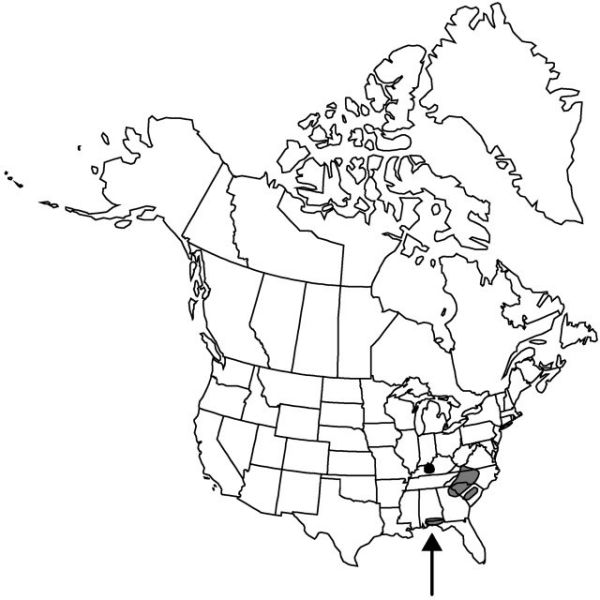Difference between revisions of "Smilax biltmoreana"
Bull. Torrey Bot. Club 43: 413. 1916.
imported>Volume Importer |
imported>Volume Importer |
||
| Line 60: | Line 60: | ||
|publication year=1916 | |publication year=1916 | ||
|special status=Endemic | |special status=Endemic | ||
| − | |source xml=https:// | + | |source xml=https://bitbucket.org/aafc-mbb/fna-data-curation/src/2e0870ddd59836b60bcf96646a41e87ea5a5943a/coarse_grained_fna_xml/V26/V26_981.xml |
|genus=Smilax | |genus=Smilax | ||
|species=Smilax biltmoreana | |species=Smilax biltmoreana | ||
Latest revision as of 21:18, 5 November 2020
Herbs. Stems annual, erect, 0.2–0.6 m, herbaceous, glabrous, glaucous abaxially; prickles absent. Leaves few, approximate distally; tendrils absent; blade ovate, 6–15 × 1.5–8 cm; glabrous and glaucous abaxially, base cordate, margins entire, apex acute to acuminate. Umbels 1–few, proximalmost axillary to leaves or bracts, few-flowered, open; peduncle 5–10 cm. Flowers: perianth greenish; tepals 2.5–3.5 mm; anthers longer than filaments; ovules (1–)2 per locule; pedicel slender, ca. 1 cm. Berries black to bluish black, globose, ca. 8 mm diam., not glaucous. 2n = 26.
Phenology: Flowering May–Jun.
Habitat: Rich, open woods in ravines, along streams, and at bases of bluffs
Elevation: 0–1500 m
Distribution

Ala., Fla., Ga., Ky., N.C., S.C., Va.
Discussion
Smilax biltmoreana is distinguished by its ovate leaves with glabrous and glaucous abaxial surfaces.
Selected References
None.